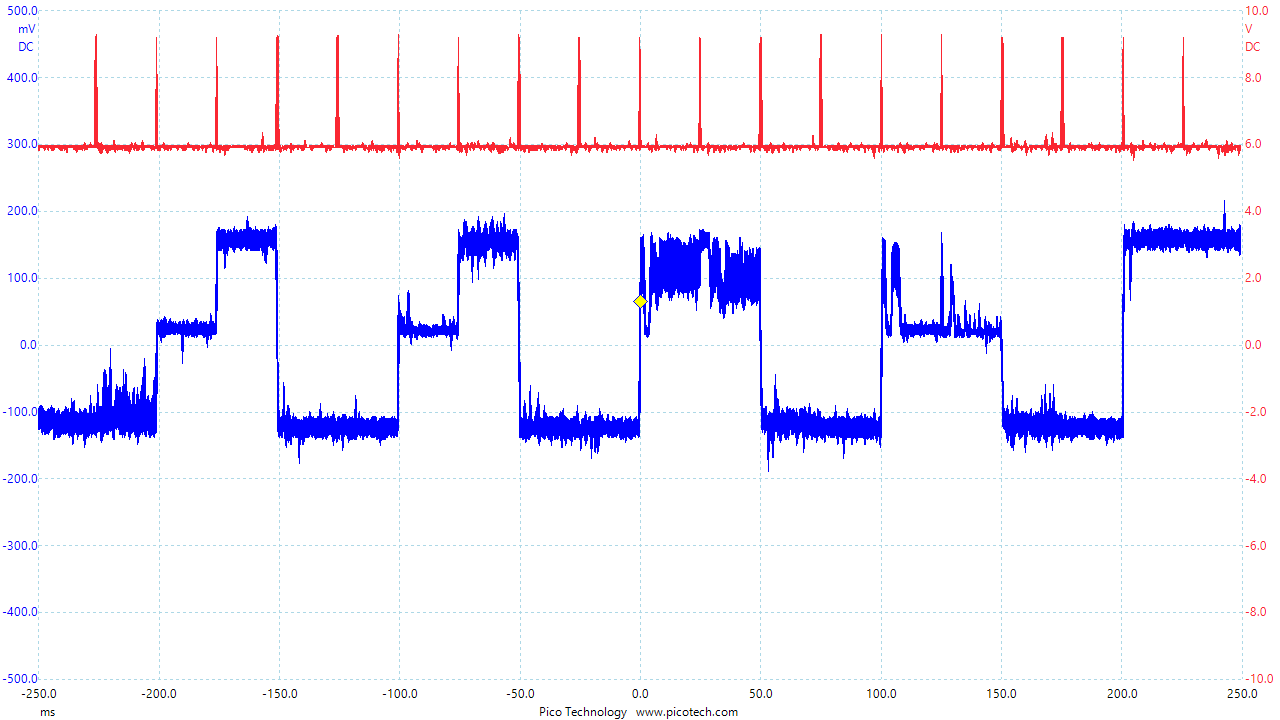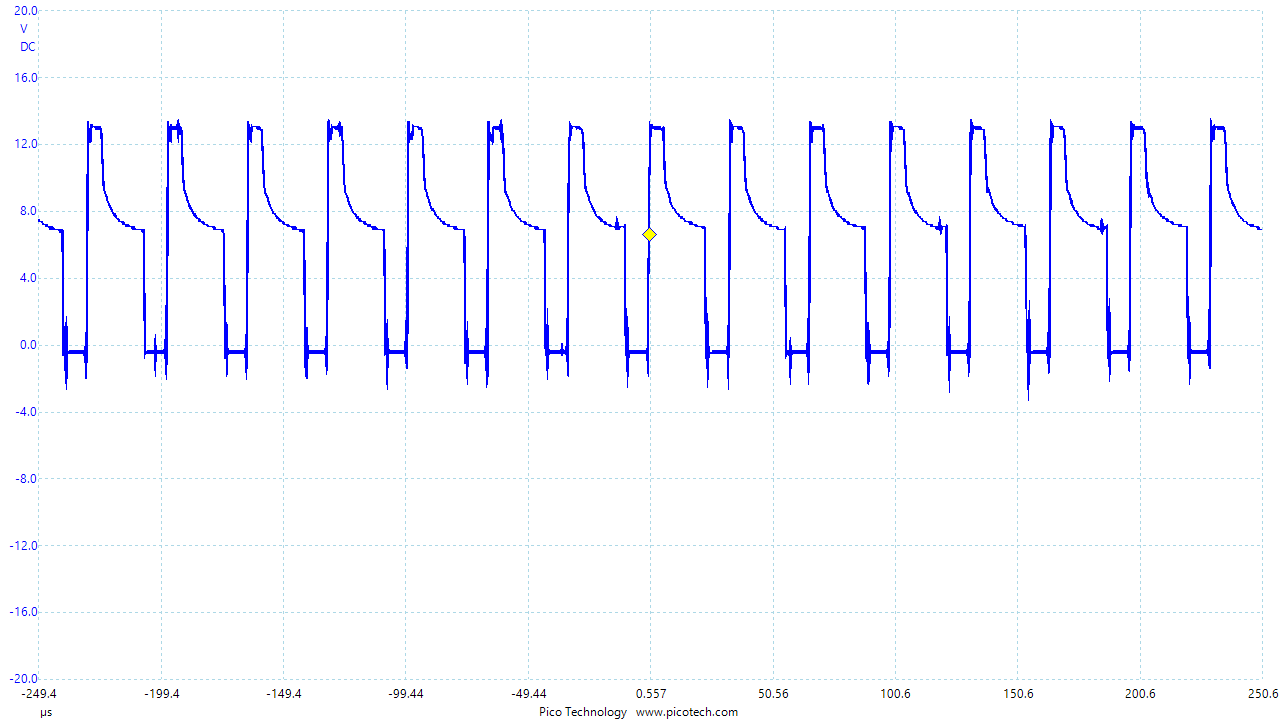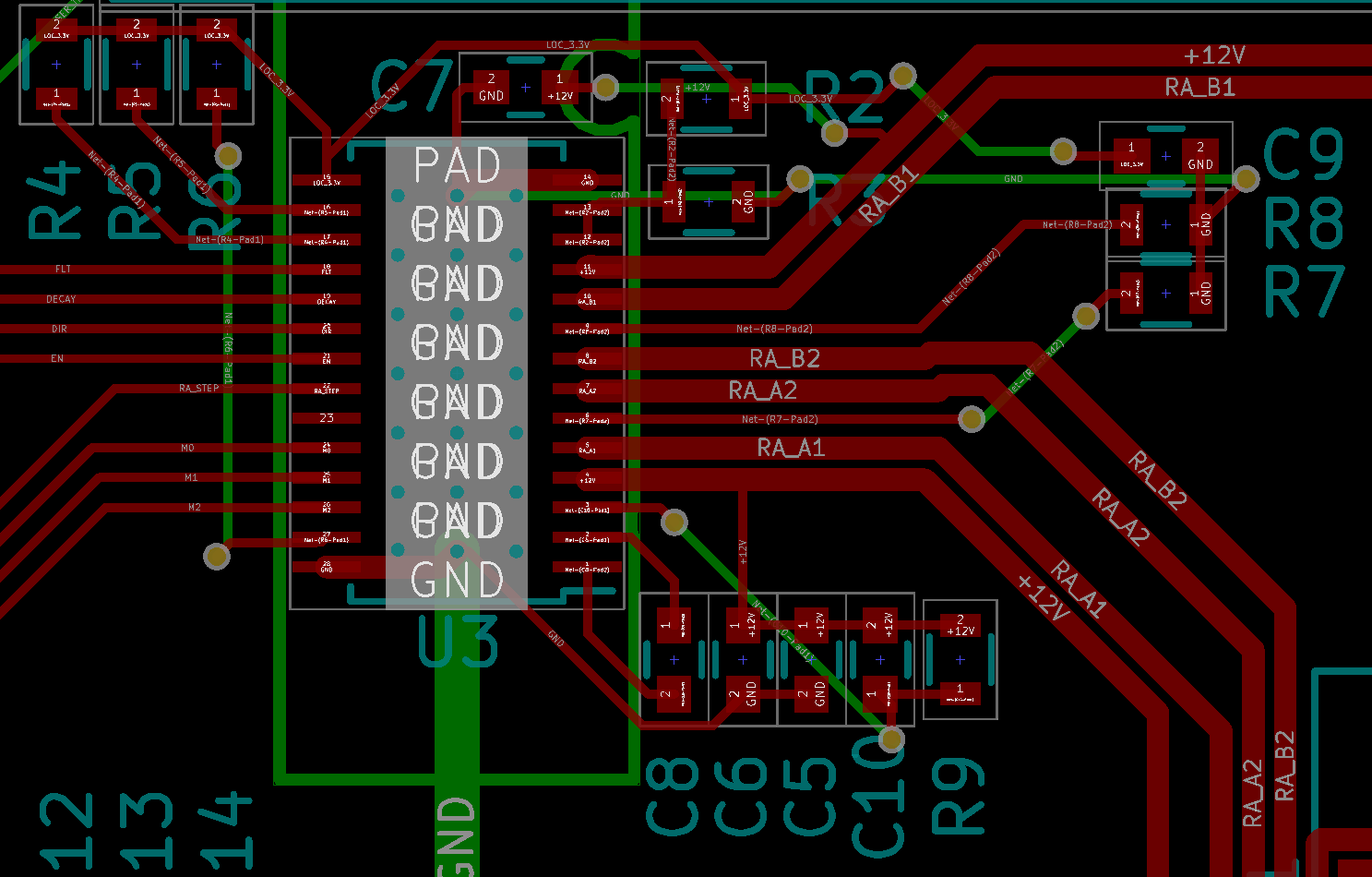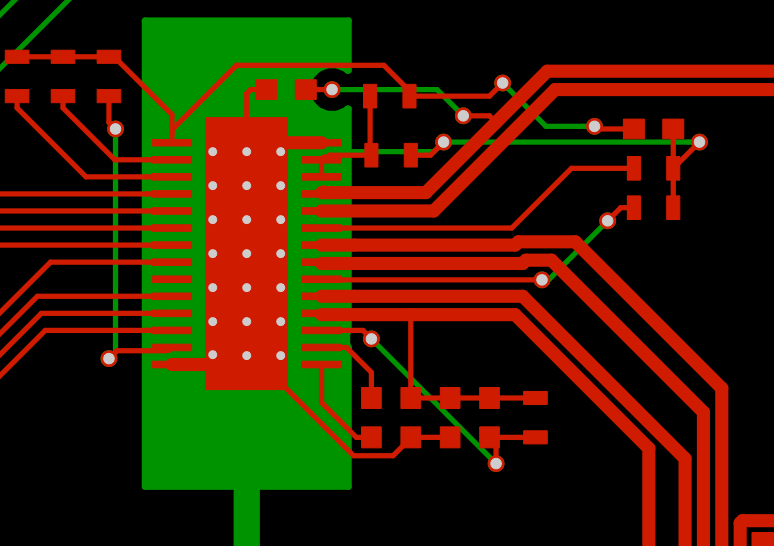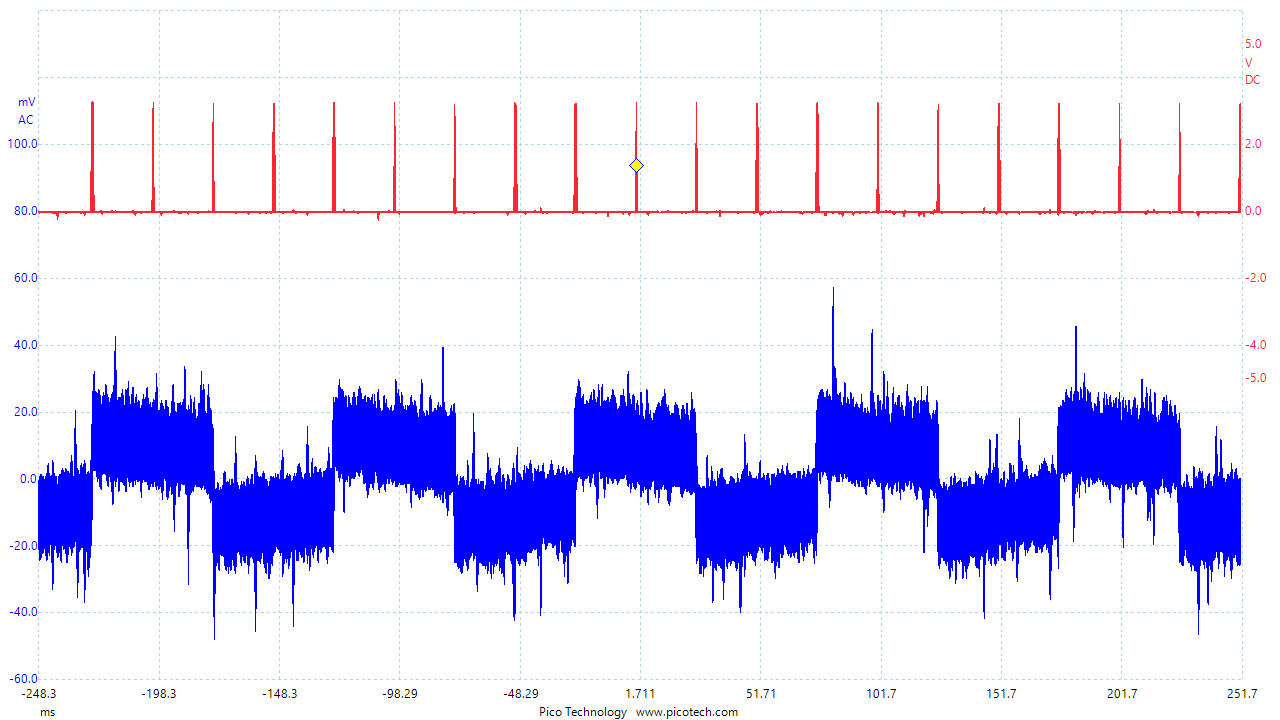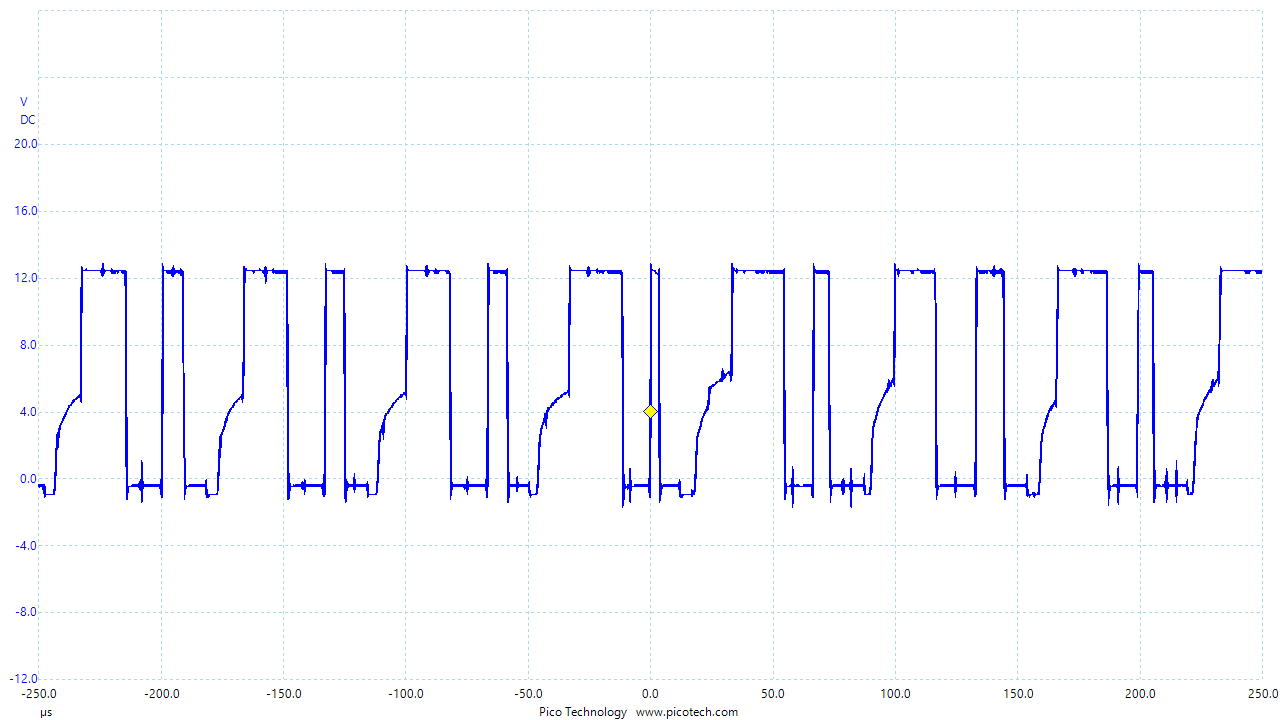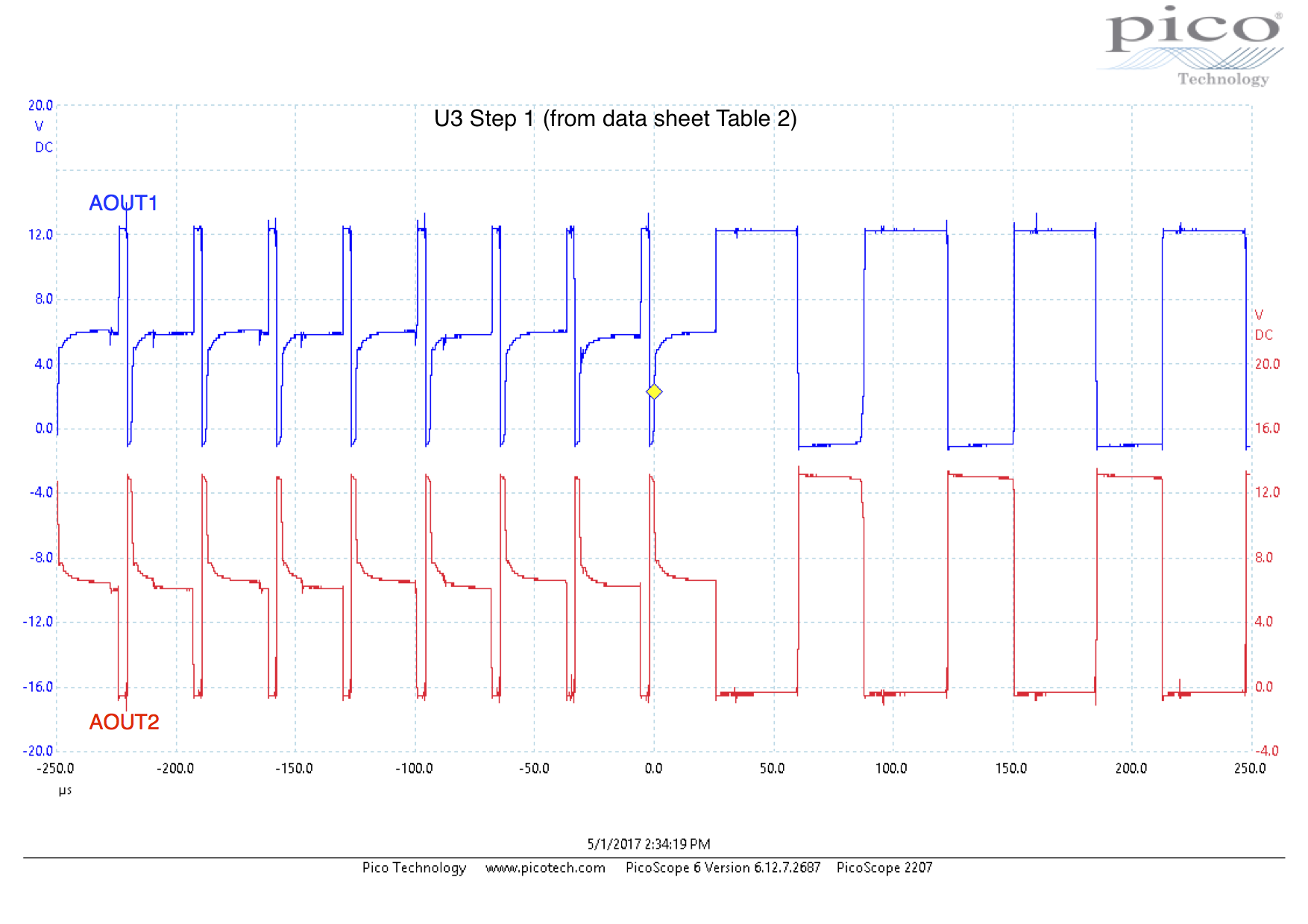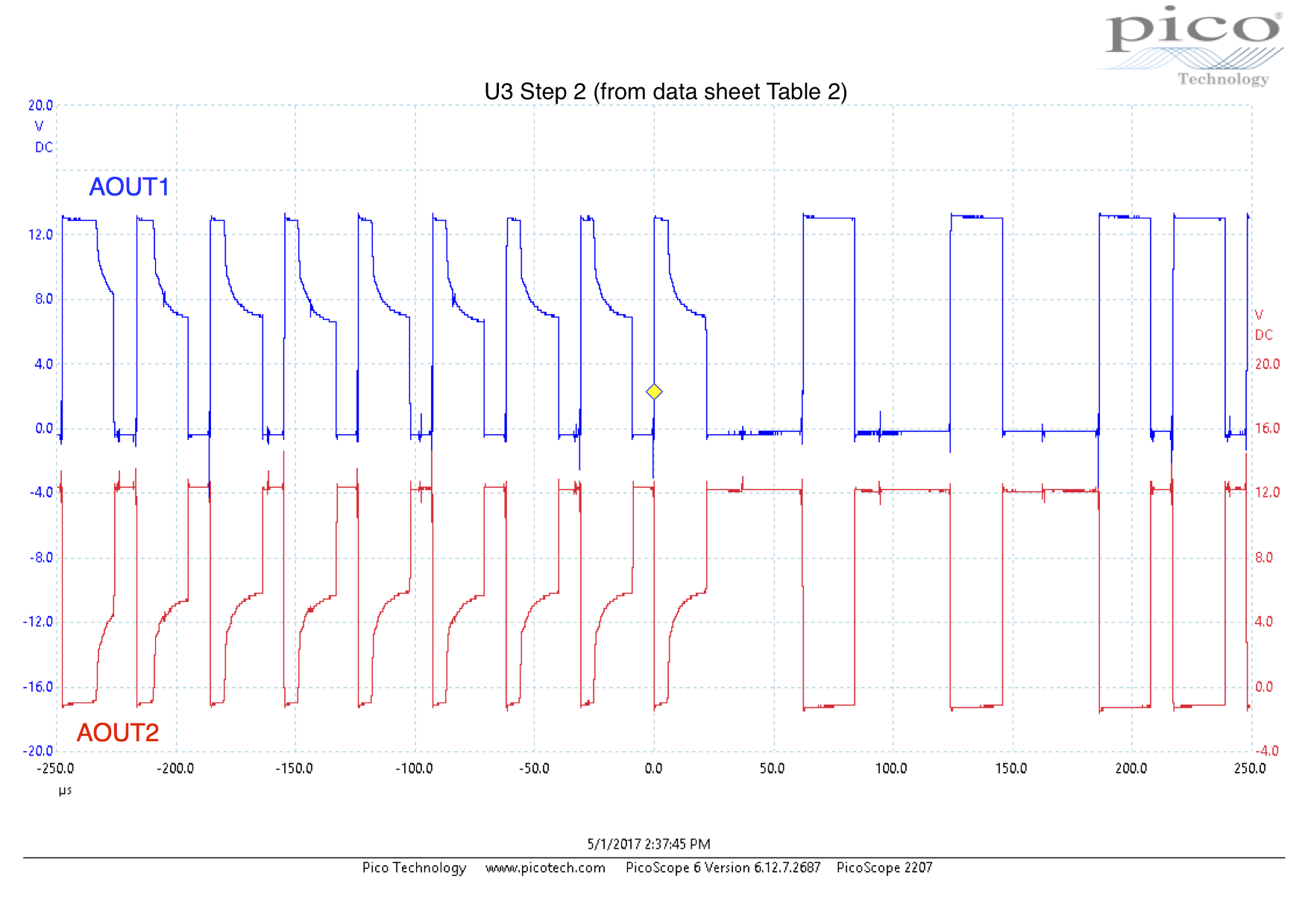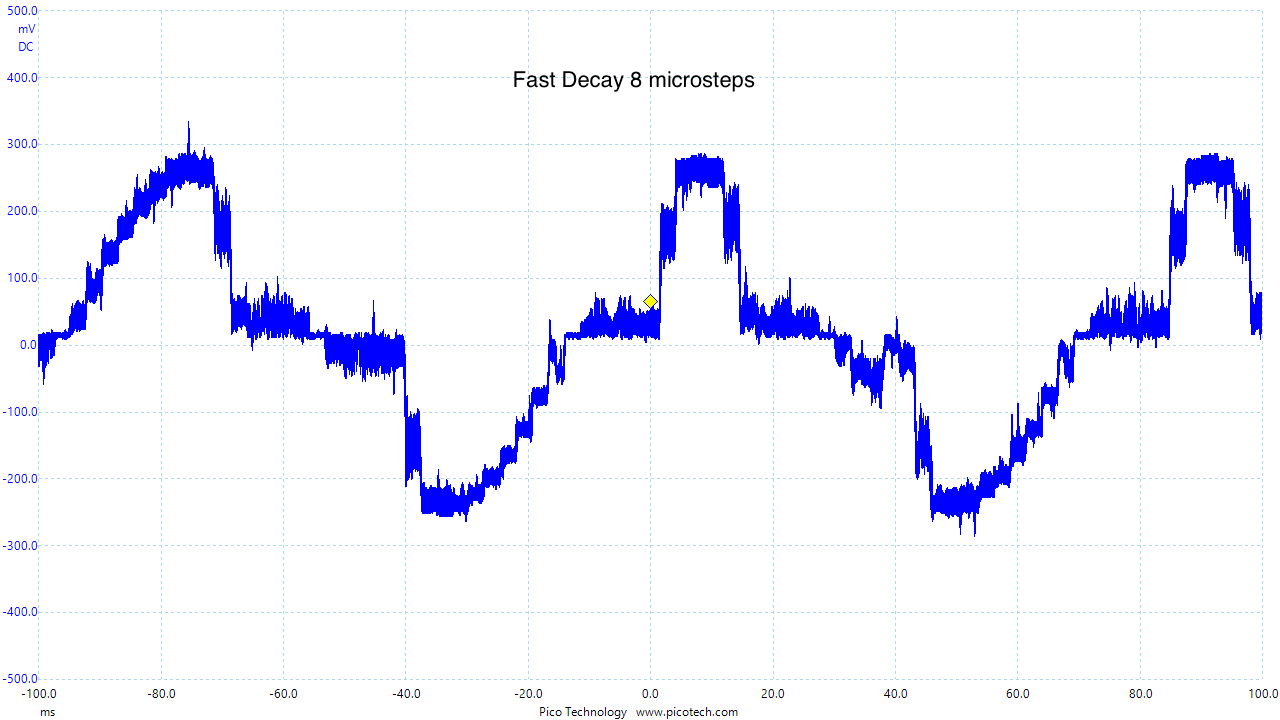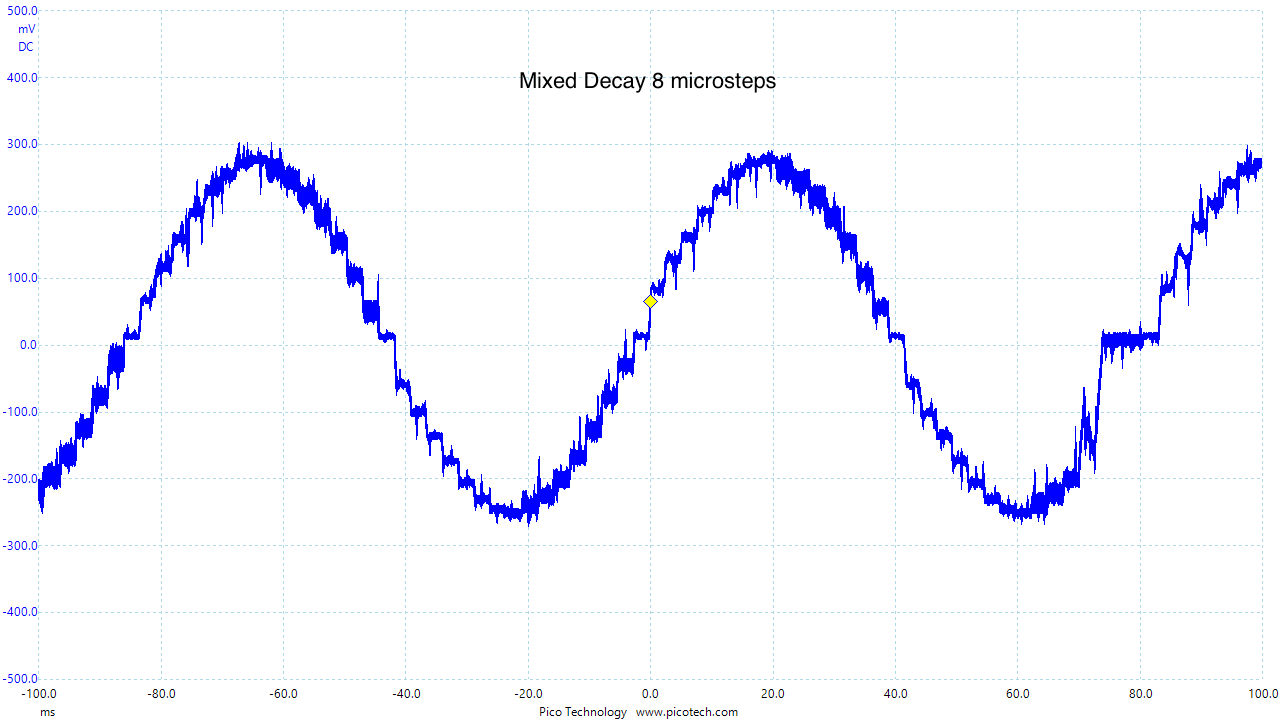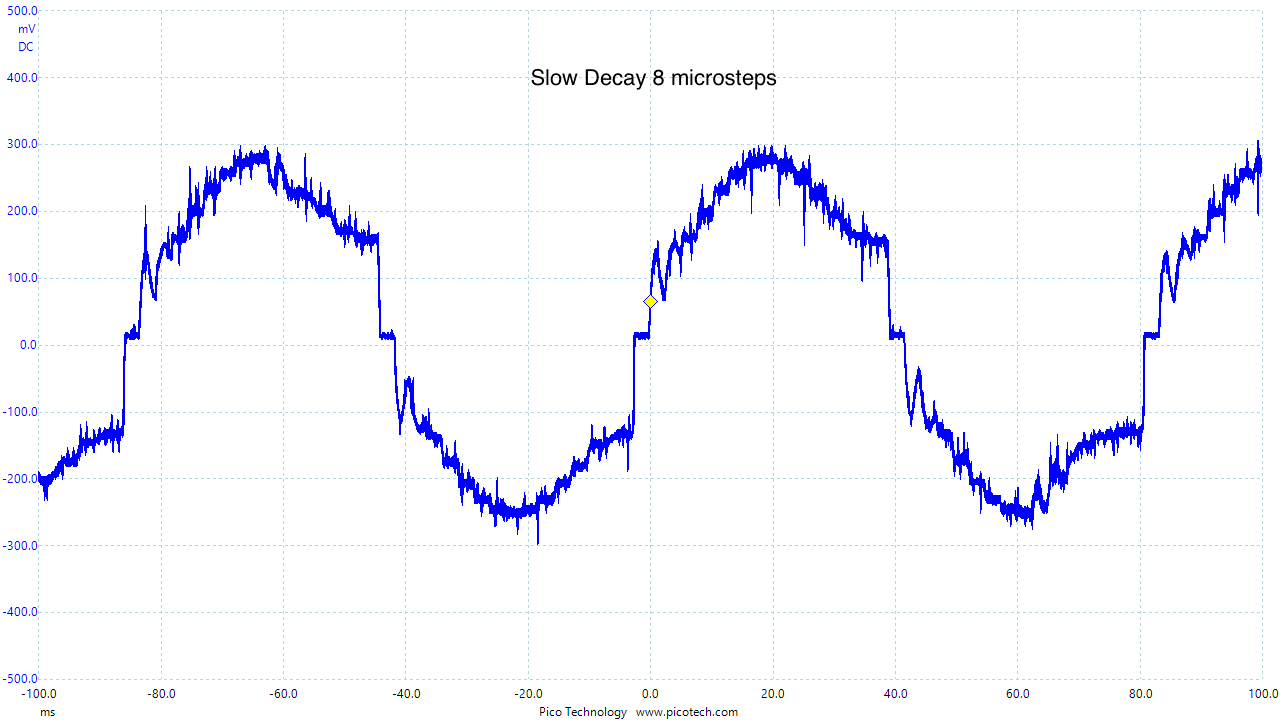Other Parts Discussed in Thread: DRV8880, DRV8886AT, DRV8886ATEVM
I am designing a custom controller board for controlling steppers on a telescope mount. For my initial prototype (Rev A) I used two Pololu DRV8825 Stepper Motor Driver Carrier boards plugged into a custom board design. This prototype drives two 1.5A NEMA 17 bipolar steppers and works very well.
I designed a second board (Rev B) using three DRV8825 devices mounted directly on the board and I am experiencing erratic motion on all three motors and see some serious irregularities on the current waveform as shown below. This trace was captured while in full step mode with a step rate of 40Hz. to a single NEMA 17 stepper. The corresponding trace of the Rev A system looks good.
In looking further into the problem I also see serious irregularities in the PWM waveforms for both A and B outputs as shown below. Again, the corresponding traces from the Rev A system look normal.
Details of the Rev B design are:
- Three DRV8825 devices controlled by PIC18F46K20 microprocessor
- Two NEMA 17 2.0A bipolar stepper motors, phase resistance 1.4 Ohms, phase inductance 3.0 mH
- One Nema 11 670mA bipolar stepper motor
- 12V power supply (same supply successfully used on Rev A board)
- Decay is set to Fast Decay.
- I used a stencil, solder paste, and a hot plate to do the reflow soldering of all components, monitoring the board temperature with an IR thermometer.
- Schematic and layout shown below
The board as tested differs from this schematic as follows:
- Resistors R4 and R5 are tied to the board 3.3V net rather than the DRV8825's local 3.3V. This was accomplished by cutting a trace and adding a wire.
- Resistors R7 and R8 are now 0.1 Ohm 0.5W. The original resistors did not have an adequate power rating.
- A 100mF 35V electrolytic capacitor was added at the device. The original design had a single bulk capacitor for the entire board.
I realize that much of the layout is not according to recommendations. After reading most of the DRV8825-releated posts on this forum I realize that much needs to change here. Previously I had not seen the EVM so I will use it as a model for the next rev.
I have tested all three DRV8825's on the board and they all show this behavior. Has anyone seen anything like this in the past? Is there anything in the information here that would point to a possible cause? I will be redesigning the board in any case but I would like to have an idea of what caused this before I do that. My only theory at this point is that my solder reflow method resulted in the devices getting too hot and being damaged. It seems unlikely to me that all three devices would be damaged in the same exact way however.


